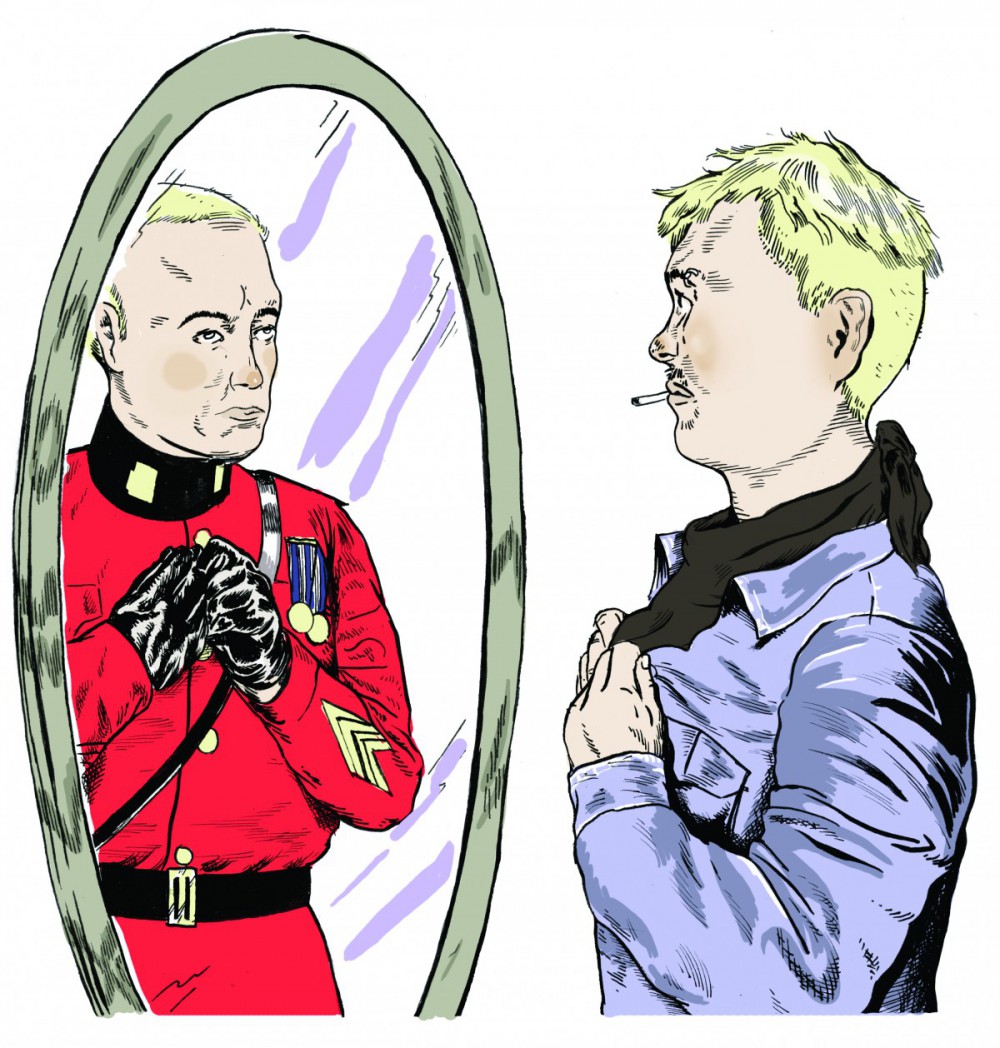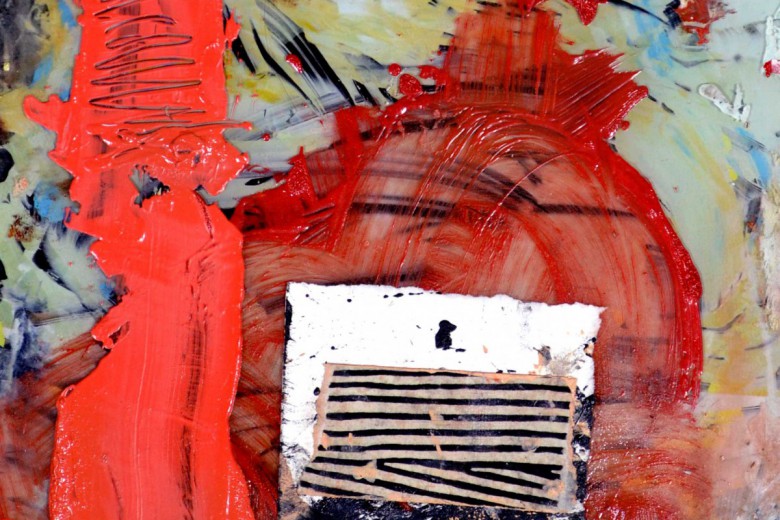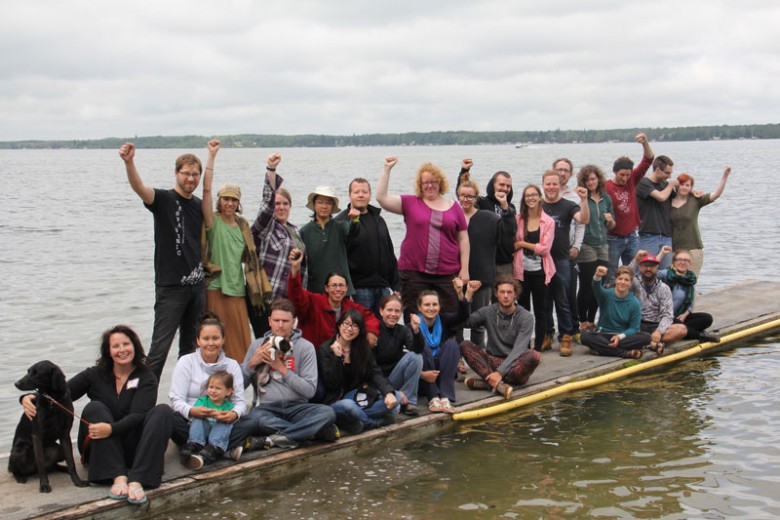
On June 26, 2010, while the G20 summit was under way amid mass protests on the streets of downtown Toronto, a startling revelation was made that would reverberate through activist communities for months to come. Two undercover police officers had joined protest groups and been living among activists as part of a large-scale investigation that began more than a year earlier, in April 2009.
Following the arrest of four activists that same morning under charges of conspiracy, the Toronto Star reported that “Undercover officers infiltrated criminal extremist groups in Guelph, Kitchener, Waterloo and Toronto and forged relationships with several people whose ideological beliefs and backgrounds pose a direct threat to large-scale public events, including the G20,” according to allegations by Crown attorneys.
The case is now under a court-imposed publication ban, which prohibits disclosure of the undercover agents’ identities. While only two officers have been officially acknowledged, documents recently released to Briarpatch support suspicions among activists that infiltration was in fact much more extensive.
Although the names of the two confirmed infiltrators are not yet public, many activists are convinced they know who the officers are.
“One of my former friends disappeared, and it became very obvious to us that she was a police officer,” says Joshua Gilbert, a house painter involved with anarchist organizing in Guelph, Ontario. He describes her as a “motherly type character” who was more interested in being an emotional support than in political organizing. “We became friends with her for a year and a half, and a lot of us became close. I cried on her shoulder and had lots of close conversations with her before realizing that her job was to manipulate people into giving information, and to create social profiles on us.”
“It was really upsetting and infuriating, and I remember feeling isolated and not able to trust people,” recalls Gilbert. “That is part of the point of infiltration … creating this sort of fear and paralysis.”
The stated goal of undercover investigations is to gather information and to provide testimony in criminal prosecutions, but many activists believe that the paranoia, distrust and the divisions they generate are just as damaging, whether or not it is their intended impact.
Infiltration doesn’t have to actually happen to create fear, says Blandine Juchs, a Montreal-based organizer who is supporting G20 arrestees. “It creates fear just by knowing that it could happen.”
Infiltrators are also known to provoke, entrap and criminalize activists. Juchs points to an example from the protests against the 2001 Summit of the Americas in Quebec City, where the police infiltrated the “Germinal” activist collective. In order to place an officer inside the group, they set up a front company with the sole purpose of hiring a member of Germinal so that an undercover officer, posing as a co-worker, could befriend him. This officer was then able to join the collective.
“[Germinal] had a plan to break the wall around the summit. Their plan did not involve arms or anything, but the infiltrator proposed to have access to explosives. Because of this, the charges and conditions they got were way worse,” says Juchs.
Gilbert feels that in the lead-up to the G20, undercover police similarly tried to ensnare activists. “They had to come up with some reason why they investigated us for so long. They needed to get charges on people, they needed to entrap people in conversation.”
He believes there was a second undercover officer operating in Guelph who attempted to entrap people by stating his intention to engage in various illegal activities, such as acts of sabotage, hoping to find activists who would responded favourably.
“Immediately people were suspicious,” Gilbert explains. The activists told the man that many of them felt uncomfortable with him and he left Guelph, but was able to join activist groups in other cities.
“A long and ignoble tradition”
Mark Leier, a professor at Simon Fraser University who has studied the use of police spies in Canadian labour organizations, describes police infiltration in social movements as a “long and ignoble tradition in Canada.” Leier states that events like the 1919 Winnipeg General Strike helped shape the mandate of the Royal Canadian Mounted Police (RCMP), which was founded the following year with a directive to spy on Canadians, and particularly left-wing and labour organizations.
On some occasions, plainclothes or undercover police officers will attend a specific protest or meeting to gather information, but soon return to other duties. The term infiltrator, however, generally refers to officers who assume false identities for months, or even years. In one case described by Leier, Mountie John Leopold infiltrated the inner ranks of the Communist Party of Canada for over eight years before being exposed in 1928.
The RCMP has since continued to use undercover officers, infiltrating unions, Black Power groups, the FLQ, Indigenous groups, anti-war movements and other organizations.
Leier emphasizes that the use of undercover officers is just one of many surveillance tactics employed by the RCMP; others range from reading a group’s public literature and opening their mail to wire-tapping, placing people under surveillance, and coercing or paying members of a group to become police informants.
According to professor Gary Kinsman, who studies surveillance in Canada, the infiltration ahead of the G20 was one of the longest periods of infiltration in recent decades.
“For those people who experienced this [at the G20] and didn’t expect it to be happening, it may have been seen as shocking or unique. But if you have a longer view of Canadian history, this is pretty standard for how the security police have related to various social movements,” says Kinsman.
Infiltration and the G20 security apparatus
The undercover officers who infiltrated activist groups ahead of the G20 were part of the Joint Intelligence Group (JIG), which was tasked with monitoring all suspicious activity and threats to the security of the G20 summit. As a collaborative umbrella organization, JIG brought together a range of intelligence-gathering agencies with different rules and regulations to carry out a broader range of activities than any one agency could alone.
According to Crown attorney Vincent Paris, quoted in the Toronto Star, JIG was made up of the RCMP, the Ontario Provincial Police and a variety of local police forces across Ontario, including the Toronto Police Service.
Documents from Canada’s main intelligence agency, the Canadian Security Intelligence Service (CSIS), show that it was also part of JIG. Several lesser-known intelligence agencies, including the Canadian Forces National Counter-Intelligence Unit (CFNCIU) and the Communications Security Establishment Canada (CSEC), were also involved in intelligence gathering.
Documents made available to Briarpatch through an Access to Information request reveal that the investigative arm of JIG, called the Primary Intelligence Investigation Team (PIIT), had a mandate to “detect, deter, prevent, investigate, and/or disrupt threats” to the summit.
According to the documents, PIIT used a wide array of investigative techniques including “the recruitment of confidential informants and undercover operations” and was “divided into 13 investigative teams, in addition to an RCMP Covert Operations Team [COT].” Some PIIT teams conducted surveillance on the various forms of transportation used to get protesters to Toronto for the demonstrations. Other teams were comprised of “Event Monitors” who were placed inside the crowd to report on the “temperament and tempo” of demonstrations.
It was the COT that was charged with conducting “undercover operations to uncover criminality in relation to the 2010 G8-G20 Summits.”
While Paris told the Toronto Star that there were only two undercover officers, activists suspect that there was a much greater number of undercover police infiltrating activist organizations across the country ahead of the G20 – not only in Guelph, Toronto, Kitchener and Waterloo, but also Montreal, Ottawa and Vancouver. Activists’ suspicions are usually directed at those who joined groups in the lead-up to the G20 then disappeared shortly before the summit commenced, and who have been unreachable ever since.
Activists also speculate that infiltration was not limited to militant protest groups or those using direct action tactics, but that undercover police were also placed in a variety of groups that were clearly not involved in any criminal activity. This includes a group of legal observers, a media centre for independent journalists and a team of street medics who volunteered to provide first aid to those on the streets.
“It is not like any one element can be the proof – people disappear from movements all the time. I am glad they are not all cops,” says Blandine Juchs. But she believes that when several factors all point to someone being an infiltrator, “it can become clear.”
RCMP documents acquired by Briarpatch suggest that there were indeed more than two infiltrators, though they do not reveal the identities of any undercover officers.
In a section of the documents dealing with covert and undercover operations, the document states that “JIG has assigned 12 trained covered investigators and will conduct active operations as directed by the Primary Investigator.”
When asked if “covered investigators” are synonymous with undercover investigators, the RCMP refused to comment, stating that answering any questions ”could compromise ongoing criminal prosecutions, civil litigation and other inquiries.”
“You can’t know for sure,” says Juchs when asked if she believed there were 12 infiltrators. “To know for sure there is an infiltrator you have to go through a trial and the police have to decide to use the testimony of that infiltrator.”
Strategies for dealing with infiltration
Activists often speak of infiltrators in hushed whispers. Juchs believes that more dialogue about infiltration is needed, including discussions about how to organize effectively despite their presence. She has witnessed activists become so preoccupied with protecting themselves from infiltration that it becomes an impediment to achieving broader goals.
Juchs explains that in Montreal, while there were strong suspicions that some people who disappeared after the G20 were undercover officers, it was decided that the “emotional and energy cost” of trying to expose them was too great.
“We decided, ‘Okay, we are never going to know for sure; we are just going to move on, we have other things to do,’” says Juchs.
“I am not saying we shouldn’t investigate; I am just saying we shouldn’t overestimate our capacity,” she adds.
Gilbert feels that if people had gotten to better know the infiltrators they worked with in Guelph and asked them more questions about their personal histories, that some of the inconsistencies in their stories would have emerged.
“I think with certain security precautions it would be a lot harder for infiltrators to become a part of our network easily,” he told Briarpatch.
However, he feels some security measures can backfire.
“I try to stay really far away from the idea of hunting infiltrators and informants,” says Gilbert. He advocates a model he calls building a “base of safety,” which helped him overcome the feelings of isolation that plagued him when he first concluded that he had been friends with an undercover officer.

He believes getting to know people better will allow activists to grow and build networks that connect to more people, instead of closing themselves off.
A very different perspective on how to combat infiltrators is advocated by Macdonald Scott, a Toronto activist and legal worker. After 20 years of organizing with groups in Canada and the United States, he has seen countless groups struggling with the impacts of infiltration. He worries that it is all too easy for activists to draw the wrong conclusions.
“I have seen a tendency within organizations to say ‘we will close our membership, we will really carefully scrutinize [new people],’” he says, explaining that he doesn’t think this will stop some infiltrators from blending in seamlessly.
Scott points to an example from the U.S. in the late 1980s where an undercover officer infiltrated Earth First!, a radical environmental movement, and was able to gain the complete trust of Peg Millett, a key organizer from the group.
“The infiltrator who got her was sleeping with her for two years,” explains Scott. He believes the FBI created a psychological profile of Millett in order to place an infiltrator who matched her interests.
Scott believes that rather than heighten secrecy, organizations should embrace open and democratic ways of organizing, whereby infiltrators aren’t able to easily impede activists’ ability to fight for a better society.
Scott is troubled by the way some organizations have been responding to reports of infiltration since the G20.
“The fear of infiltration becomes more damaging than the actual infiltration. It becomes a stymieing of growth, discussion and debate within our movements. That is what worries me, and I see that now, post G20,” he says.
Scott feels that the real strength of infiltrators is that they can exacerbate existing divisions or conflicts within a group. “We need to focus on figuring out ways of dealing with our divisions constructively, figuring out more democratic ways to disagree with each other, yet still support each other and work in solidarity.”
Scott believes the best way for activists to combat infiltration is to focus on their strengths.
“We are not good at being cops or trying to investigate each other like we are cops; what we are good at is … creativity. We are good at diversity when we are doing well. We are good at engaging people and involving people. We should focus on those things rather than focusing on creating internal police forces, or internal secret services to sniff out the cops,” says Scott. “We should be focusing on being democratic and using the strength of being democratic to create a revolution.”






